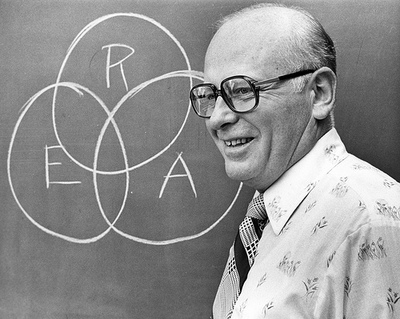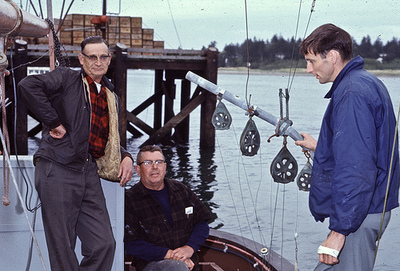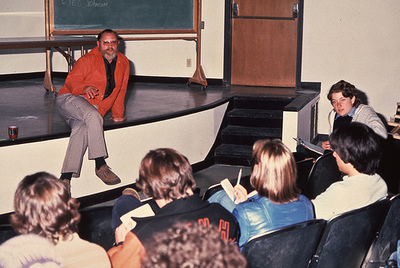Wick started by hiring the first full-time marine agent for Lincoln County, Bob Jacobson, an OSU graduate student and former Beavers basketball star, who had grown up on the coast. “Bill recognized the potential of establishing some kind of marine program where we would work, not only with the oyster people, but with others up and down the coast who make their living from the sea,” Jacobson recalled in a 2008 oral history interview. “What they told me when they hired me was, ‘You’re going to be an agricultural agent – in hip boots.’”
For the first few years, Jacobson and his hip boots covered the coast from Astoria to Brookings, getting to know commercial fishermen, seafood processors, local port commissioners and others, asking them “What can I do for you?” Despite initial skepticism from some communities, Jacobson said, those early contacts have continued to pay dividends to the present day.
Meanwhile, in Washington, D.C., efforts were underway to translate Extension’s Land Grant concept into Sea Grant, a separately authorized marine research and outreach program signed into law by Lyndon Johnson in 1966, funded by Congress the following year, and brought under the wing of the National Oceanic and Atmospheric Administration in 1970. The following year, the first four Sea Grant Colleges were designated, at the universities of Washington and Rhode Island, Texas A&M – and OSU.



